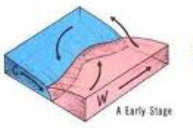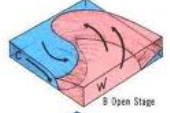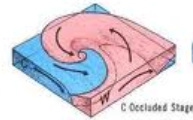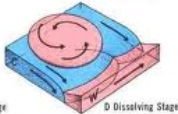The waters of life-and death

Floods kill an average of 140 people a year, its just under 40 present of fatalities from natural hazards .China is the most frequently flooded country, with repeated disasters throughout its history. Floods are always happen as a result of thunder storms, which produce nearly constant rain.
Heavy rainfall can lead to rapid surface runoff if the rainfall is too intense for infiltration to occur,This can lead to a sharp rise in river discharge called a flash floods. Flash floods usually produce rainfall over 2 inches per hour. Water is unable to absorb anymore, it then run along the surface into rivers, causing banks to break, greater water pouring out in few minutes and cause larger damage.
River Flooding-when water level becomes so high that the river spills over its band onto the flood plain. this can be caused by constant rainfall over a long period of time or a massive input of water over a short period of time.Any low-lying area near to a river channel is at risk from river flooding.
Flash floods are so destructive not only because they have so much energy and contain a great deal of mud, but also because there is little warning. The most troubling thing about flash floods is that they can affect areas many hundreds of miles from the source of the water.
Heavy rainfall can lead to rapid surface runoff if the rainfall is too intense for infiltration to occur,This can lead to a sharp rise in river discharge called a flash floods. Flash floods usually produce rainfall over 2 inches per hour. Water is unable to absorb anymore, it then run along the surface into rivers, causing banks to break, greater water pouring out in few minutes and cause larger damage.
River Flooding-when water level becomes so high that the river spills over its band onto the flood plain. this can be caused by constant rainfall over a long period of time or a massive input of water over a short period of time.Any low-lying area near to a river channel is at risk from river flooding.
Flash floods are so destructive not only because they have so much energy and contain a great deal of mud, but also because there is little warning. The most troubling thing about flash floods is that they can affect areas many hundreds of miles from the source of the water.
Causes of floods-DEPRESSIONS

Most of UK’s rainfall, and most of the dramatic storms, are the result of depressions. From over Atlantic oceans, when warm air from the tropics meets cold air from polar regions, depression causes. Basiclly, they are just areas of low atmospheric pressure.

Stage 1.
Cold air flowing down from polar regions meets warm air flowing up from the tropics.
The warm tropical air is less dense than the cold polar ari,so it starts to rise over it,creating low air pressure.
The warm tropical air is less dense than the cold polar ari,so it starts to rise over it,creating low air pressure.

Stage 2.
The warm air is sucked into the low-pressure area,creating a warm sector.
The cold air is sucked behind the warm air.
It atarts to spiral anti-clockwise.
As the air rises,it cools and condenses-resulting in clouds and precipitation.
The cold front forces the warm air to rise-resulting in thick cloud and heavy rainfall.
The cold air is sucked behind the warm air.
It atarts to spiral anti-clockwise.
As the air rises,it cools and condenses-resulting in clouds and precipitation.
The cold front forces the warm air to rise-resulting in thick cloud and heavy rainfall.

Stage 3.
The warm air starts to climb above the cold air because it is buoyandt.
Below the rising air the cold front catches up with the warm front.Lifting the warm sector off the ground.
Where the warm sector is lifted,it is called an occluded front
Below the rising air the cold front catches up with the warm front.Lifting the warm sector off the ground.
Where the warm sector is lifted,it is called an occluded front

Stage 4.
Cold air replaced the warm sector on the ground.
Temperatures even out.
The fronts dissapear,and the depression dies.
Temperatures even out.
The fronts dissapear,and the depression dies.
